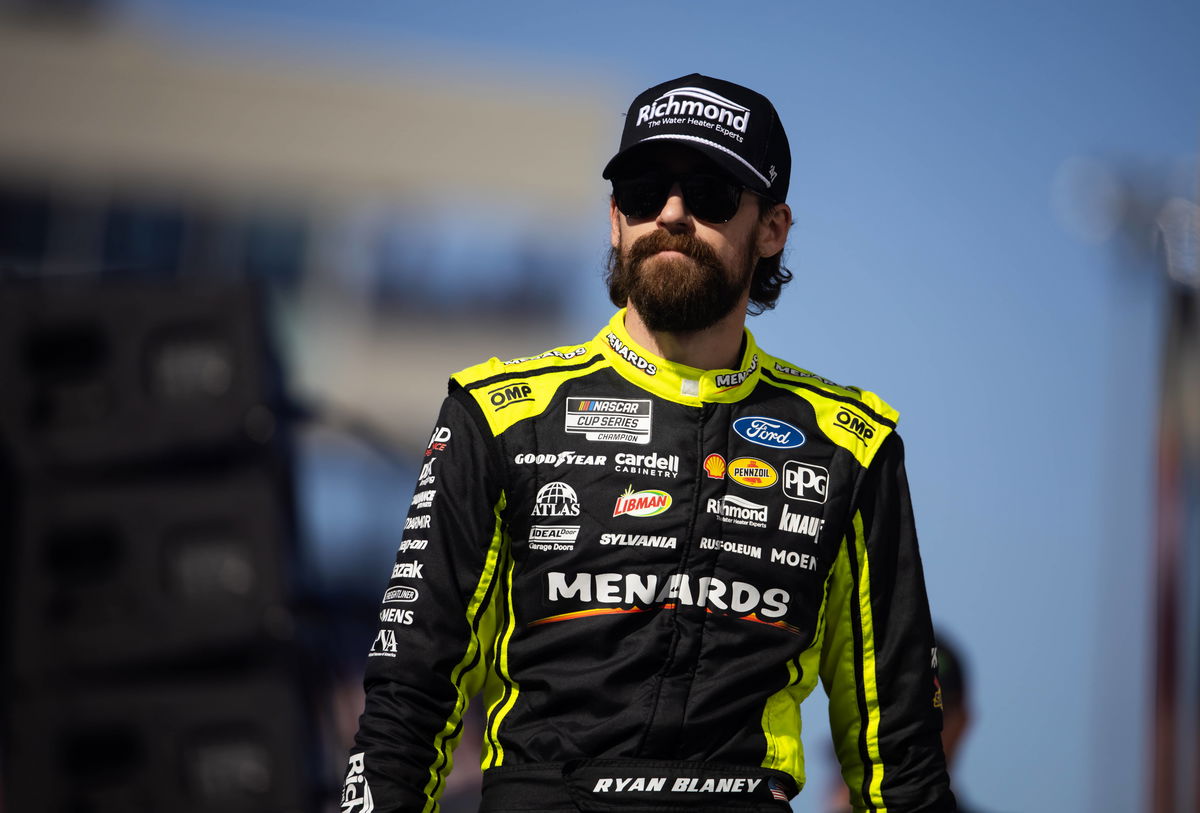
Imago
NASCAR, Motorsport, USA NASCAR Cup Series Championship Nov 10, 2024 Avondale, Arizona, USA NASCAR Cup Series driver Ryan Blaney prior to the NASCAR Cup Series Championship race at Phoenix Raceway. Avondale Phoenix Raceway Arizona USA, EDITORIAL USE ONLY PUBLICATIONxINxGERxSUIxAUTxONLY Copyright: xMarkxJ.xRebilasx 20241110_mjr_su5_019

Imago
NASCAR, Motorsport, USA NASCAR Cup Series Championship Nov 10, 2024 Avondale, Arizona, USA NASCAR Cup Series driver Ryan Blaney prior to the NASCAR Cup Series Championship race at Phoenix Raceway. Avondale Phoenix Raceway Arizona USA, EDITORIAL USE ONLY PUBLICATIONxINxGERxSUIxAUTxONLY Copyright: xMarkxJ.xRebilasx 20241110_mjr_su5_019
The closing moments at Daytona once again highlighted Ryan Blaney’s knack for thriving in the most chaotic environments NASCAR has to offer. As the field stormed toward the finish line in a breathtaking photo finish, Blaney’s presence near the front was no surprise to fans who have watched him excel on superspeedways time and again.
Watch What’s Trending Now!
Daytona and Talladega demand a balance of nerve, patience, and decisive aggression—qualities that Blaney has steadily refined into a trademark. In the aftermath of the dramatic finish, he pulled back the curtain on how he approaches the unique and unpredictable world of superspeedway racing.
ADVERTISEMENT
Ryan Blaney on embracing the chaos and finding his comfort zone
Daytona’s photo finish was just the latest reminder of how consistently Ryan Blaney puts himself in the mix on NASCAR’s most unpredictable stages. The 2023 Cup Series champion has made a habit of running near the front at both Daytona and Talladega, a pattern that doesn’t happen by chance. Superspeedway racing often humbles even the sport’s best. Dale Earnhardt Jr. pointed out that for decades, “it was always the same people running up front” at these tracks, and now Blaney has added his name to that conversation.
During his appearance on theDale Jr. Download, Earnhardt did not hold back in his appraisal: “You’ve thrown yourself into the conversation as one of the best, if not the best, at this type of racing.” He reminded Blaney that many great drivers openly admitted to dreading these events. Mark Martin, for instance, had long voiced his dislike of the format. That context made Blaney’s response all the more interesting. Instead of dismissing the danger or pretending superspeedways are just another stop on the schedule, he acknowledged the unique mental challenge they present.
Blaney explained his shift in mindset: “Years ago, I just finally put my mind [to], hey, these speedway races… it is what it is. You’re gonna have days that go terribly wrong… and that’s just part of it. If it happens, it happens.” That acceptance, he said, removed the anxiety and allowed him to actually enjoy the racing.
ADVERTISEMENT
For Blaney, enjoying doesn’t mean taking unnecessary risks. Instead, he leans on patience, a trait often overlooked amid the chaos of Daytona and Talladega. “It’s easy to get caught into the trap of like, ‘take every run, go now, go now,’” he explained. “I try to just let things develop.” By resisting the urge to force opportunities, he positions himself for the closing laps rather than burning up chances too early.
He also pointed to his years of learning from superspeedway veterans like Brad Keselowski, Joey Logano, Denny Hamlin, and Earnhardt Jr., adapting their lessons into his own approach, though the arrival of the Next Gen car forced even the most experienced to recalibrate. And crucially, those violent wrecks he’s endured don’t linger in his psyche. “I’ve had massive hits at these places… that never worries me,” Blaney said. Where others carry the weight of bad memories, he chooses resilience.
ADVERTISEMENT
That blend of acceptance, patience, and composure has elevated Blaney into the small group of drivers consistently feared in the draft. Daytona’s latest finale didn’t reinvent that storyline; it reinforced it.
NASCAR 25 sparks joy for Ryan Blaney and other racers
The unveiling of NASCAR 25 has become a poignant milestone for drivers like Ryan Blaney, Christopher Bell, and William Byron, symbolizing a unique full-circle moment where childhood dreams meet professional achievement. For Ryan Blaney, appearing on the cover of NASCAR 25 is not just a career highlight but a deep personal achievement, representing years of passion for racing games as a kid.
ADVERTISEMENT
Blaney expressed his joy with the memorable line, “Mom, I made it on the cover of a video game,” highlighting how closely video games fueled his racing enthusiasm as he grew up. Blaney reflected on how seriously he took those early virtual racing experiences, mentioning iconic games like NASCAR Heat and Total Team Control. Christopher Bell, who also expressed amazement at his cover appearance, shared this sentiment: “I remember long nights playing iRacing, getting all the data and physics right. It’s incredible to be on the cover of a game that means so much to the sport and the next generation of drivers.”.
Bell emphasized how those games, grounded in realistic data and physics, served as more than entertainment—they were tools for honing his racing instincts. William Byron’s story added another layer to the narrative, revealing his progression from online sim racing to real-world stock car competition. “It’s more than just a game; it’s been a vital part of my journey.” He explained.
For Byron, the announcement of NASCAR 25 felt like a personal reward for his journey and a nod to the importance of gaming in his career development. Together, their reactions underscore how the culture of racing video games has become a foundational part of the motorsports world, evolving from a mere pastime to a vital training ground and recognition platform.
ADVERTISEMENT
The excitement surrounding NASCAR 25 highlights a generational shift where gaming and professional racing are interconnected, shaping not only fans but also the sport’s rising stars in a profound way
ADVERTISEMENT
ADVERTISEMENT
ADVERTISEMENT

